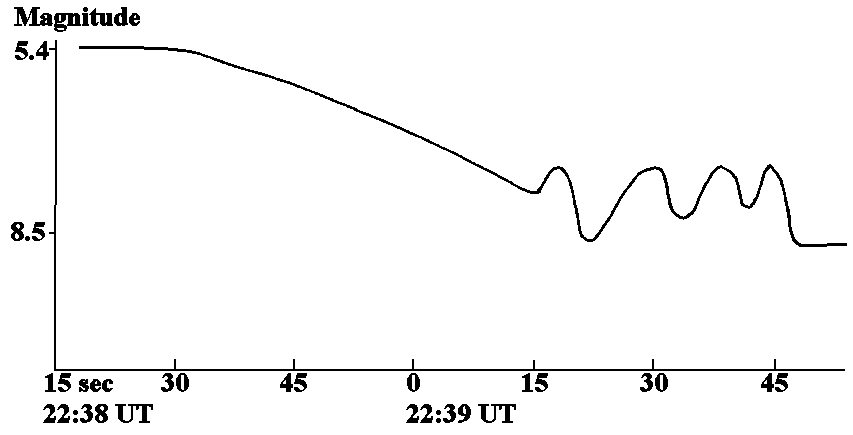
Orwell Astronomical Society (Ipswich)
Occultation Of 28 Sagittarii By Titan, 03 July 1989
On 03 July 1989, Saturn's largest moon, Titan, occulted the magnitude 5.4 star 28 Sagittarii. The BAA issued a circular providing notification of the event; unfortunately, it arrived late and was incorrect, and this had the consequence that only two members of OASI, Alan Smith and Martin Cook, attempted to observe the phenomenon, and they missed the disappearance event.
Alan and Martin opened Orwell Park Observatory at 22:00 UT on 03 July and set the Orwell Park 26 cm refractor on Saturn. OASI does not own a photometer so the pair intended to perform only a simple visual observation and timing of the event, using two cassette recorders to note comments and the MSF Rugby clock to provide an accurate timing reference. They located Titan with a little difficulty owing to the very poor seeing, the close proximity of the comparatively bright star 28 Sgr and the floodlights mounted on Orwell Park School's clock tower shining straight into the dome! They then switched on the cassette recorders and tested the audio capture: to their dismay, they found that the microphones picked up every whisper of the floodlit garden party taking place in the school grounds but only loud shouts from inside the dome!
Using an eyepiece giving a magnification of x270 on the 26 cm refractor, Alan and Martin started serious observations (recording their impressions on the cassette recorders) at 22:30 UT, with the occultation itself expected at 22:40 UT. Alan observed through the 26 cm refractor and Martin through the co-mounted 10 cm guide telescope. At 22:30, they could not separate 28 Sgr and Titan and it was difficult to predict when the occultation would occur. However, as they observed, the star dimmed, disappeared, returned and then finally dimmed again. Visually it was hard to follow exactly what happened.
They then waited for 28 Sgr to reappear. For three or four minutes nothing happened, then Martin, observing with the 10 cm guide telescope, shouted that the star was back! Alan checked again through the 26 cm refractor but there was definitely NO increase in brightness of the star. Another three or so minutes went by and it became apparent that something was very wrong! This is where they discovered their mistake: as the 26 cm telescope tracked across the sky following Titan, it was simultaneously being increasingly occulted by the edge of the dome aperture. The 10 cm guide telescope, being mounted on one side of the main instrument was unaffected.
The light curve that Alan and Martin plotted is reproduced below.

Alan Smith & Martin Cook